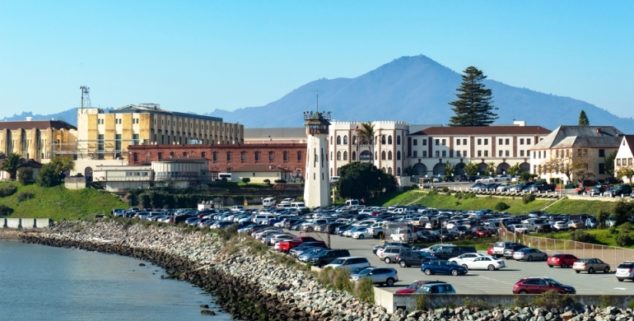Recent News
California’s death row inmates fan out across prison system
 A view of San Quentin State Prison in Marin County with Mt. Tamalpais in the background. (Photo: Ameer Muscard-Afcari, via Shutterstock)
A view of San Quentin State Prison in Marin County with Mt. Tamalpais in the background. (Photo: Ameer Muscard-Afcari, via Shutterstock)Scores of California’s condemned prison inmates are being removed from their cells on San Quentin’s death row and sent to eight high-security lockups in the state’s sprawling penal system.
The transfers follow an executive order by Gov. Gavin Newsom halting executions in California. The governor also has vowed to remodel San Quentin’s death row, where executions have been conducted for generations.
In the late 1930s, California switched to lethal gas for executions, and 194 people — including four women — were executed by gas through 1967.
“We talk about justice, we preach justice, but as a nation, we don’t practice it on death row,” Newsom said earlier this week.
The first San Quentin execution, by hanging, was in 1893; two years later, Folsom prison had its first hanging.
A total of 215 inmates were hanged at San Quentin and 92 at Folsom, according to the California Department of Corrections and Rehabilitation, which manages the state’s prison system. The last execution by hanging at Folsom was conducted Dec. 3, 1937. The last execution by hanging at San Quentin was held May 1, 1942; the defendant had been convicted of murder in 1936.
In the late 1930s, California switched to lethal gas for executions, and 194 people — including four women — were executed by gas through 1967. After a 25-year hiatus, executions resumed and following a lengthy legal wrangle, lethal injection was substituted for gas. The most recent execution was that of Clarence Ray Allen in 2006.
“The underlying motive of the administration is to mainstream as many of these condemned murderers as possible.” — Michael Rushford, president of the Criminal Justice Legal Foundation
Thus far, 116 of the state’s 673 male inmates at San Quentin death row have been moved to other maximum security prisons. Twenty-one condemned female inmates at the state prison in Chowchilla will remain at that lockup, but will be transferred to a less restrictive environment within that lockup.
The new homes for the inmates, along with San Quentin, are the California Correctional Institution in Tehachapi, California Medical Facility in Vacaville, California State Prison in Corcoran, Centinela State Prison near El Centro, Kern Valley State Prison in Delano, R.J. Donovan Correctional Facility near San Diego, Salinas Valley State Prison and Central California Women’s Facility in Chowchilla.
“The underlying motive of the administration is to mainstream as many of these condemned murderers as possible,” says Michael Rushford, president of the Criminal Justice Legal Foundation
California officials designate the security level of prisons on a scale of 1 to 4, with four being the most secure. All of the prisons taking death row inmates are either 3 or 4 on the security scale. The prisoners’ sentences are life terms without the possibility of parole.
While plans for the remodeling of San Quentin’s death row housing are fairly complete, it is unclear what will be done to the death row section of the lockup in Chowchilla.
These locations have a mixture of higher Level III and IV security facilities and have lethal electrified fences. No participant will be housed in a location lower than Level III and they will be interspersed with other incarcerated people, prison officials said.
The inmate transfers have been conducted under a pilot program, which originally was scheduled to last two years.
But prison officials say they intend to expand the program, and transition it from a voluntary program into a mandatory effort.
Currently, all condemned inmates are eligible for transfer unless they have pending charges, have been found guilty of certain disciplinary offenses within the last five years, or if they are housed in certain restrictive housing units for disciplinary reasons.
With 694 condemned inmates, Newsom plans to empty out the death row housing within the next two years.
While plans for the remodeling of San Quentin’s death row housing are fairly complete, it is unclear what will be done to the death row section of the lockup in Chowchilla.
Meanwhile, $1.5 million was requested by the California Department of Corrections and Rehabilitation to dismantle and repurpose San Quentin’s Death Row housing “into something innovative and anchored in rehabilitation,” spokeswoman Vicky Waters told the AP.
The prison never used the $853,000 execution chamber that was previously built during the Schwarzenegger administration, but officials have no immediate plans to remove or alter it.
Want to see more stories like this? Sign up for The Roundup, the free daily newsletter about California politics from the editors of Capitol Weekly. Stay up to date on the news you need to know.
Sign up below, then look for a confirmation email in your inbox.

Leave a Reply